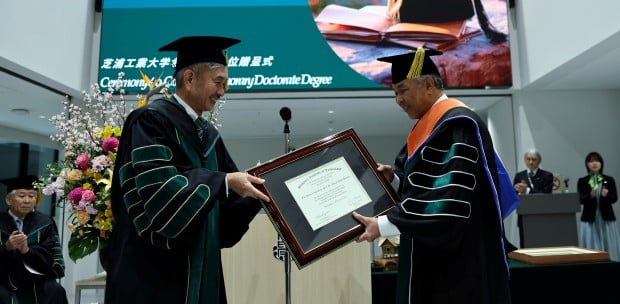The contract doctor issue has been much discussed. The government has offered to reduce the backlog in stages.
But the number of permanent posts that is offered is small. A more realistic number is 5,000 a year.
The government is grappling with the massive financing that's involved at a time when it has to deal with other pressing economic issues.
The contract doctor issue has grown bigger because it was not effectively addressed earlier.
To be fair, the previous administration did introduce measures but they were temporary in nature.
Many sympathise with the contract doctors. But when they talked about going on strike, that sympathy level dropped.
We know how crucial good medical service is to the nation.
Even with the number of contract doctors in place, we are told that we are still behind the recommended number per thousand population to deliver good service.
Doctors in government hospitals complain about being overworked, while patients complain about waiting a long time.
Many heart patients have to endure a long wait before getting their slot for surgery.
Private hospitals can ease the waiting time, but only for those who can afford it.
So most people look to government clinics for treatment. Many feel the government has been allocating a big chunk of the budget to the health sector.
It is not enough. Raising taxes has been suggested to provide the extra finance. But many say it is no guarantee.
Even developed economies like the United Kingdom are dealing with rising health costs.
Gone are the days when it was easy for doctors to secure jobs. There was a time when medical graduates were guaranteed jobs. That partly explains why many competed to study medicine.
But nowadays, even getting a place to do housemanship is hard to come by.
So the need for answers has grown more urgent.
The talk of using technology, such as artificial intelligence and robotics, has grown louder.
But using these Internet-driven technologies requires good digital infrastructure.
We also need people with the right skills to run these health schemes.
There must be a long-term plan to transition to a more technology-dependent health service.
It is not much different from other economic sectors that are also looking to invest in technology for answers.
We saw how technology came to our aid during the pandemic. We saw how technology improved the diagnostics and the treatments to manage Covid-19.
There is no reason why the other diseases, including non-communicable diseases, cannot be dealt with using the IR4.0 group of technologies.
Many are aware of remote surgeries in some countries, and the progress made in imaging diagnostics using AI.
To transition to a technology-driven healthcare, we need to invest in building health technologists.
We also need a clearing house for technologies.
It is no good simply buying these technologies.
We need to have the competency to maintain sophisticated technologies. We may also need to adapt these technologies to our situation.
This calls for the setting up of technology-support outfits that can double up as research and training centres.
Simply put, our health service ecosystem is in need of new ideas.
Deploying technology can resolve contract doctor woes.
The writer is a professor at the Tan Sri Omar Centre for STI Policy, UCSI University





